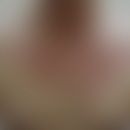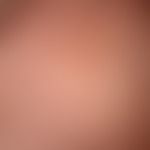Synonym(s)
DefinitionThis section has been translated automatically.
Largest group of cutaneous non-Langerhans cell histiocytoses (seealso under histiocytoses).
DefinitionThis section has been translated automatically.
The term "xanthogranuloma" covers clinically diverse diseases of the"non-Langerhans cell histiocytoses" (xanthogranuloma family) with common histological features. The xanthogranuloma family is the largest group of non-Langerhans cell histiocytoses (NLHZ). The diseases grouped here are considered systemic diseases of the macrophage system, whose cutaneous manifestation is characterized by nodular to diffuse granulomatous dermatitis with morphologically differently configured macrophages (vacuolated, xanthomatized, dendritic to stellate) as the dominant cell type. The pathogenetic commonality of this group is also underscored by the fact that histologic and clinical transitions can be observed between the individual clinical pictures.
Xanthogranulomas occur singly or multiply (localized or disseminated), monoorganic or polyorganic. Correspondingly, there is also a great variability of the clinical appearance.
You might also be interested in
ClassificationThis section has been translated automatically.
Classification of the xanthogranuloma family according to histo-morphological criteria:
Polymorphic
- Juvenile xanthogranuloma (nevoxanthoendothelioma)
- Adult xanthogranuloma (Disseminated adult xanthogranuloma)
- Scalloped cell xanthogranuloma (rare dendritic to stellate variant of adult xanthogranuloma)
Monomorph-vacuolated
Monomorph-xanthomatous
- Xanthelasmata
- Verruciform xanthoma(s)
- Diffuse normolipemic xanthomas
- Diffuse normolipemic xanthomas (with/without paraproteinemia) (diffuse large plaques)
- Papular xanthoma(s)
- Xanthoma disseminatum (papular xanthomas)
Monomorph-oncocytic
- Reticulohistiocytoma (giant cell histiocytoma)
- Multicentric reticulohistiocytosis
Monomorph-spindle
- Progressive nodular histiocytosis
- Spindle cell xanthogranuloma
- Progressive mucinous histiocytosis (familial variant of progressive nodular histiocytosis)
HistologyThis section has been translated automatically.
Proliferating cells are regularly CD68 and CD163 positive, whereas CD1a and CD207 (langerin) are negative in macrophages. S100 is rarely positive. So are alpha-1-antitrypsin, alpha1-antichymotrypsin, factor XIIa, and smooth muscle actin.
Morphologically, vacuolated, xanthomatized, spindle, stellate, or oncocytic cell types predominate, depending on the type of xanthogranuloma. The appearance of giant cells may mimic a foreign body type granuloma.
Ultrastructurally, the cells contain variable, comma-shaped worm-like, myeloid, and laminated corpuscles, but no Birbeck granules.
LiteratureThis section has been translated automatically.
- Adam Z et al. (2012) Eyelids with yellow granulomas and cough - periocular xanthogranuloma associated with adult-onset asthma. A case study and an overview of clinical forms of juvenile xanthogranuloma and its therapy. Vnitr Lek 58:365-377
Behera B et al (2020) Dermoscopic features of a case of solitary reticulohistiocytoma. Indian J Dermatol Venereol Leprol 86:435-438.
Kiyohara T et al (2018) Progressive nodular histiocytosis with large nodules and a bulky mass. Content 99: Issue 6.
- Krishna VC et al. (2016) Xanthoma disseminatum with extensive koebnerization associated with familial hypertriglyceridemia C. JAAD 2: 253-256.
- Reserva J et al (2014) An 8-month-old girl with an enlarging lesion on her face. Juvenile xanthogranuloma. Pediatr Ann 43: e22-24
Shima N et al (2017) Multicentric reticulohistiocytosis with dermatomyositis-like eruptions. Intern Med 56: 2063-2066.
- Zha S et al (2022) Topical simvastatin Improves Lesions of Diffuse Normolipemic Plane Xanthoma by Inhibiting Foam Cell Pyroptosis. Front Immunol 13:865704.
Incoming links (8)
Diffuse normolipemic plane xanthoma; Histiocytoses non-langerhans cell histiocytoses; Histiocytosis benign cephalic; Pancreatic diseases and skin; Xanthogranuloma adultes; Xanthoma disseminatum; Xanthomatosis generalized plane; Xanthomatosis papular normolipemic;Outgoing links (24)
Cd163; Cd1a; Cd207; Cd68; Dermatofibroma with monster cells; Diffuse normolipemic plane xanthoma; Factor xiiia; Generalized eruptive histiocytosis; Histiocytoses; Histiocytoses non-langerhans cell histiocytoses; ... Show allDisclaimer
Please ask your physician for a reliable diagnosis. This website is only meant as a reference.

















